This is your very first post. Click the Edit link to modify or delete it, or start a new post. If you like, use this post to tell readers why you started this blog and what you plan to do with it.

This is the post excerpt.
This is your very first post. Click the Edit link to modify or delete it, or start a new post. If you like, use this post to tell readers why you started this blog and what you plan to do with it.

Leaving the Highlands Monday morning bound for Edinburgh, the capital city of Scotland, we crossed into the green lowlands of Fife and over the Firth of Forth where we got great views of the Forth Rail Bridge, the world’s first steel cantilever bridge and a UNESCO World Heritage Site. Once on the southern shores of the firth, we were soon in the city Sir Walter Scott referred to as “yon Empress of the North.”
Edinburgh is a beguiling city with a history dating back over a millennium. Built on a long spine of volcanic rock, earliest settlers quickly saw the advantages of a fortress at the top of the spine, and the town developed downward from there. In Medieval times, Edinburgh’s citizens crammed inside its walls built ever higher, leading to the some of the first “skyscrapers” in urban history. With people piled on top of each other and no real plumbing to speak of, waste from families stacked ten and twelve stories high was thrown into the streets and ran into Nor Loch where it festered. Travelers to Edinburgh could smell the city well before they could see it, and it earned the nickname “Auld Reekie.”
By the 1700s, however, Edinburgh was experiencing an economic, cultural, and intellectual rebirth, and it became the center of innovation of all kinds. Such luminaries as Adam Smith, Robert Louis Stevenson, Robert Burns, David Hume, Allan Ramsay, Thomas Carlyle, Arthur Conan Doyle, Alexander Graham Bell and many more called Edinburgh home, and with the likes of Charles Darwin, James Hutton, Joseph Black doing seminal work at Edinburgh University, it is no wonder why the city has been called “the Athens of the North” and a “hot-bed of genius” by writers of the 18th and 19th centuries.
We spent most of our first day exploring the city by ourselves, with students breaking into groups to walk the streets, investigate the mysterious wynds and closes that branch off the Royal Mile, pop into the many free museums, or toss a rugby ball around in the Princes Street Gardens, Edinburgh’s central park that was created from the drained cesspool that was Nor Loch. Our second day began with a guided tour of both New Town (created in Georgian times to accommodate both population growth and rising prestige) and Old Town, with a stop at the Palace of Holyrood House and a walking tour of the imposingly massive Castle. Within the buildings of Edinburgh Castle, we saw the room where Mary, Queen of Scots gave birth to her only son who would become James VI, King of Scotland, and, after the death of Queen Elizabeth, James I, the first king of a unified Great Britain. We also looked at the Scottish Crown Jewels, secreted away from Oliver Cromwell and then lost for almost 200 years, and the Stone of Scone (known in England as the Stone of Coronation), which was used for centuries in the coronation of Scottish kings and was only returned to Scotland by Queen Elizabeth II in 1996. After leaving the Castle, we again broke into groups, with one particularly energetic and adventurous trio of girls hiking up Arthur’s Seat, the long dead volcano that looms over the city from the east.
Over a dinner of pizza and pasta, we shared our stories of the day’s explorations, looked back on our eight days in Celtic Britain, and hoped that the blizzard back home wouldn’t delay our return to friends and family in Massachusetts. Keep your fingers crossed for us!
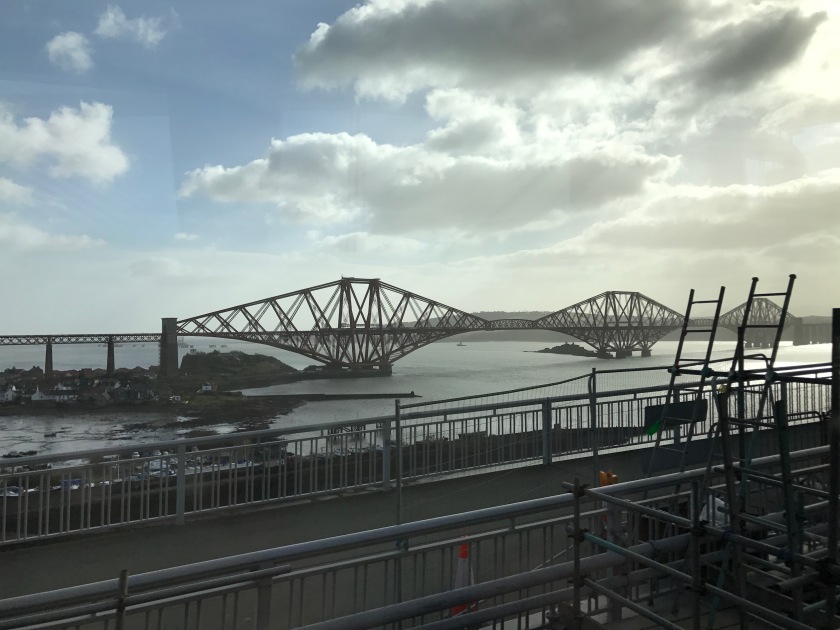
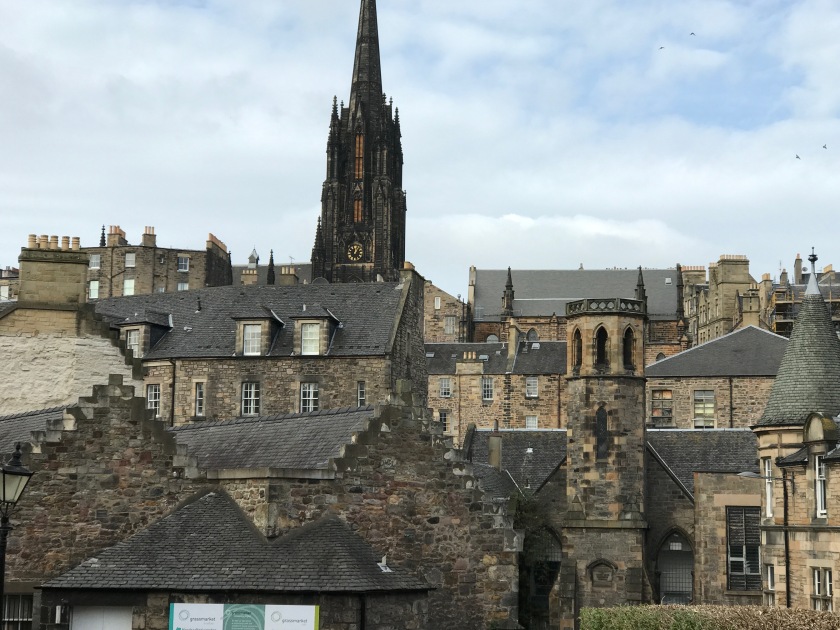
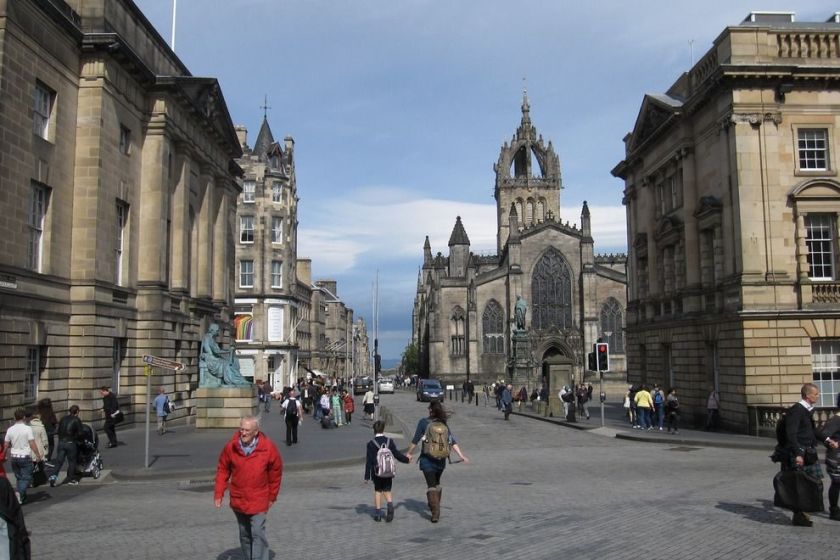

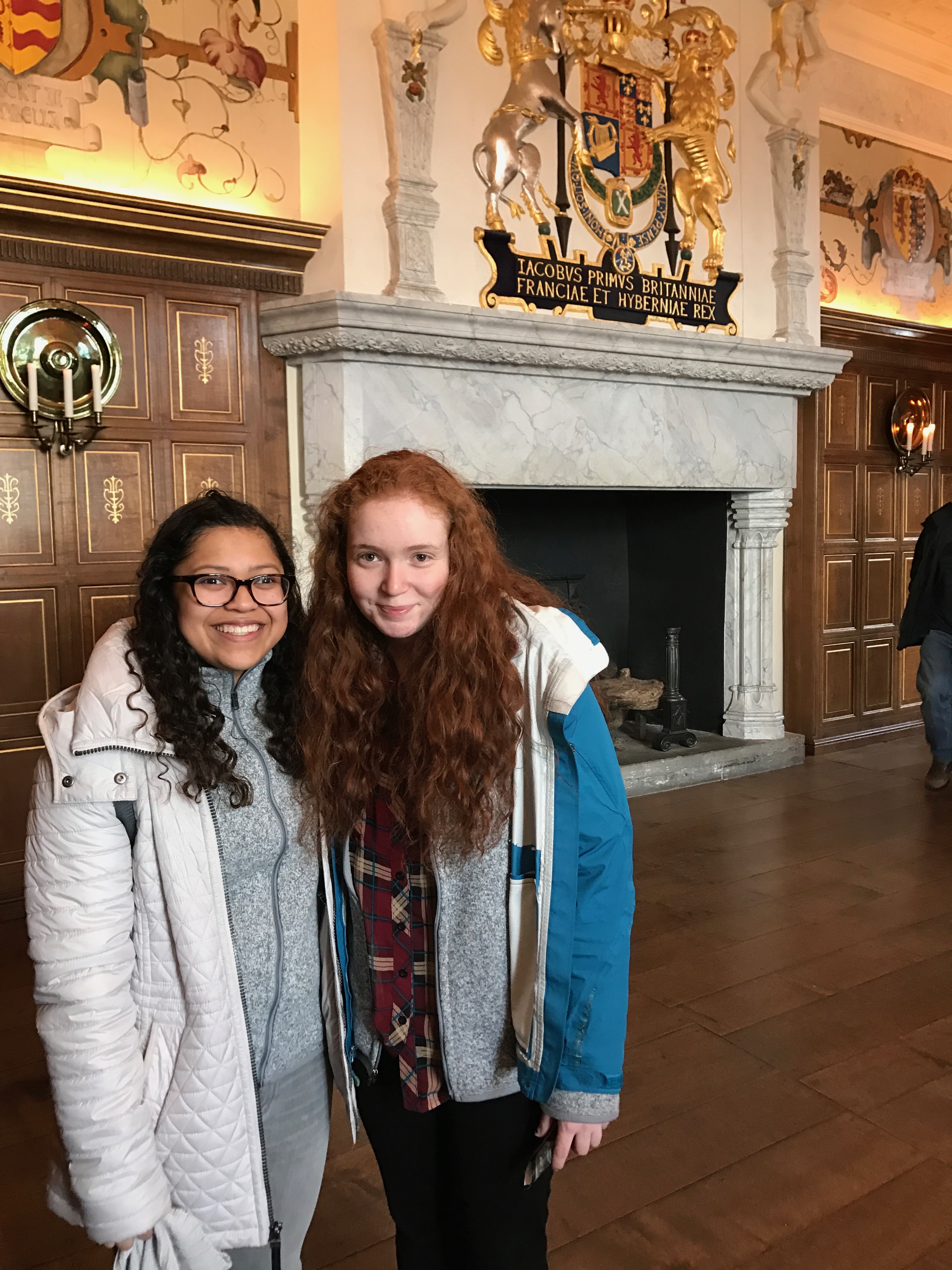

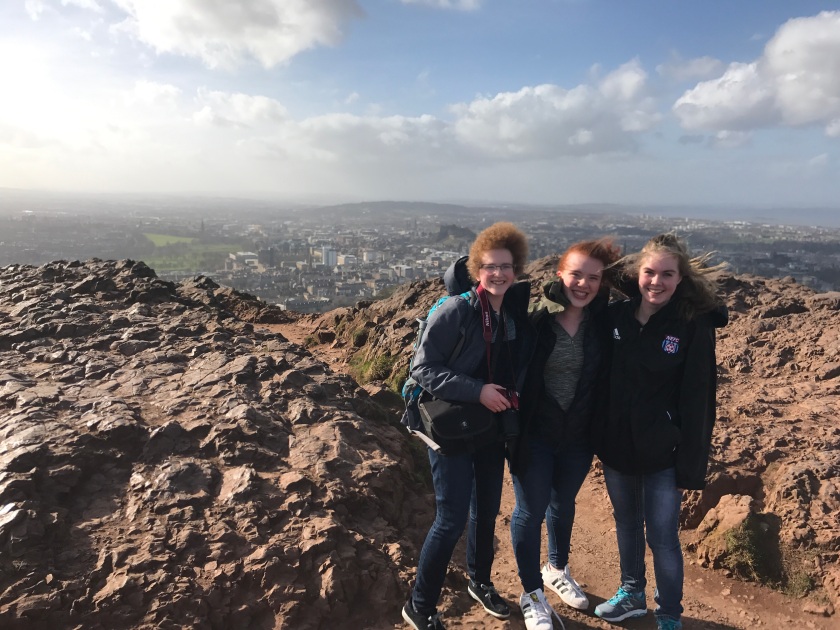
On the heals of two long days of bus rides, we happily spent significantly more time in the open air of the Highlands on Day 6 of our Gaelic adventure. After another wonderfully filling breakfast, our first stop was less than a half hour from our hotel. Bundled, hatted, and mittened, we hopped out of our coach ready for the elements.
CrainGorm Mountain is a centerpiece of outdoor activity in Scotland, drawing skiers, hikers, mountain bikers, and other thrill-seekers from all over Britain. Our day was to be more tame than many take in on CrainGorm: a ride up the funicular railway to a spot near the summit. The railway was created in the early 1990s amid controversy as environmentalists were concerned about the effects construction and increased foot traffic to the summit would have on the fragile ecosystem of the upper reaches of the mountain. We followed one of the rules that was reached as a compromise to allow the railway’s construction by staying very close to the upper station and its cafe. The wondrous views and sharp, chilly air lifted our spirits. Several of our students were overheard to promise that they’d be returning as soon as they could.
After riding back down and stopping for lunch in Aviemore, we drove through the “Capital of the Highlands,” Inverness, and on to Great Glen and world famous Loch Ness. While Scotland’s best-known loch carries importance for over 1000 years of Pict and clan histories, it is best known for the camera-shy Nessie, the monster of the lake. We boarded the Jacobite Rebel in perfect Loch Ness weather: windy, spitting rain, and heavy, leaden skies. Though eighteen pairs of eyes were peeled for a glimpse of the elusive denizen of the loch and despite the rain lifting as soon as we pulled away from the dock, we came away without a sighting or photograph that would lead to global news coverage for us and the Brimmer and May School. Still, the one hour ride was magnificent for its views and atmosphere.
We disembarked at Urquhart Castle, a fortress and clan manor with history going back to about 1100. Although left to fall into disrepair following a brutal storm in 1715, explanatory signs, photos, and drawings allowed us to understand the castle’s history and imagine ourselves living within its thick stone walls. Particularly vivid was the idea of languishing in Urquhart’s prison cell, as we were all startled by the sight of a miserable wretch squatting in the tiny, windowless hole.
After an easy, quiet bus ride back to our hotel in Newtonmore, we spent a relaxing evening repacking our bags for tomorrow’s drive to the Lowlands, across the Firth of Forth, and into wonderful Edinburgh. More news and photos to come!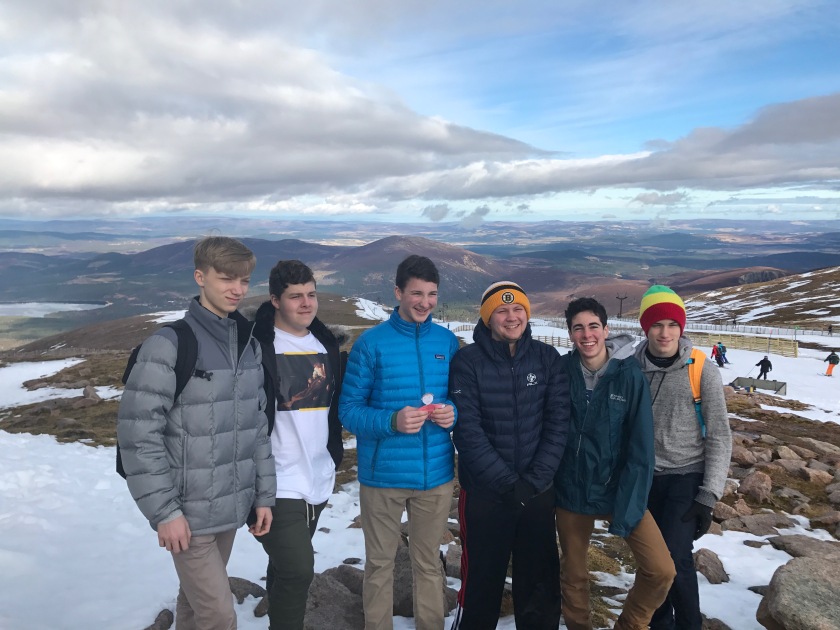
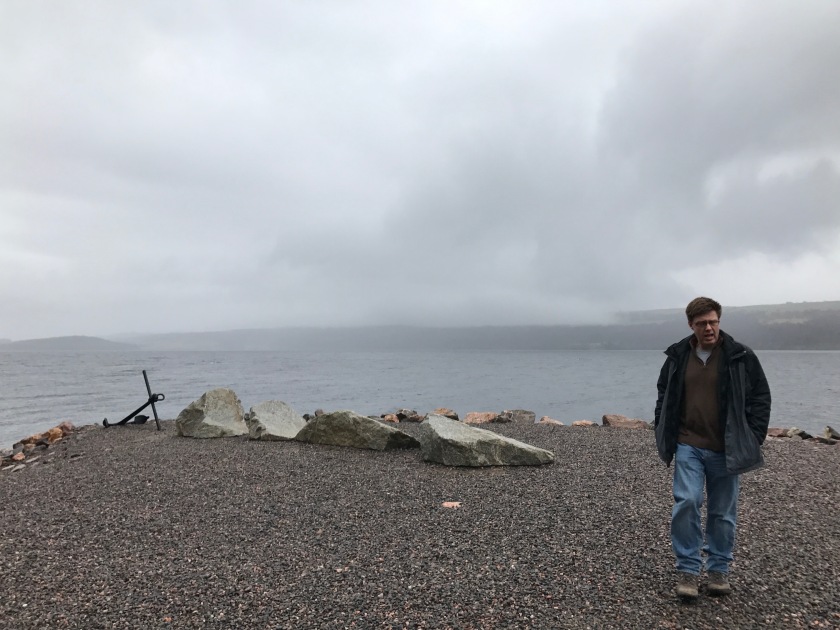

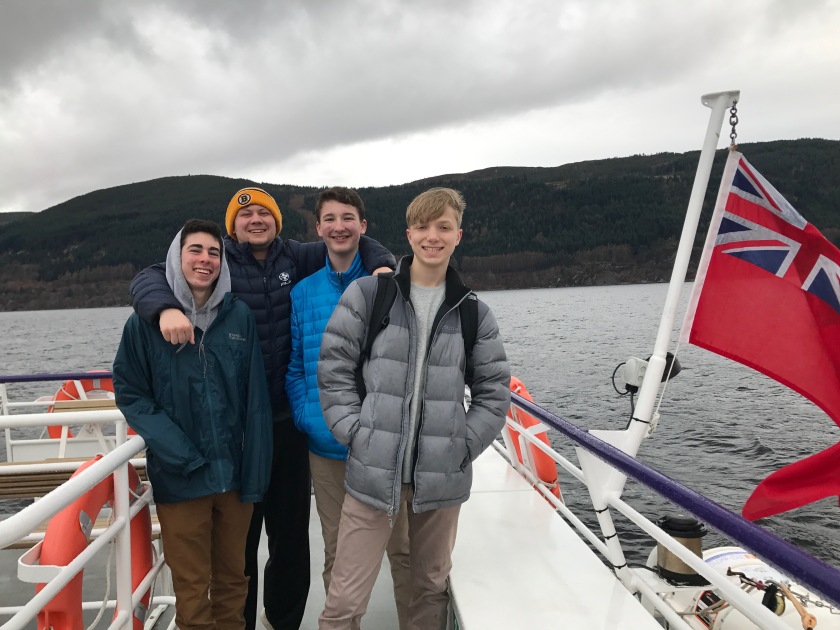
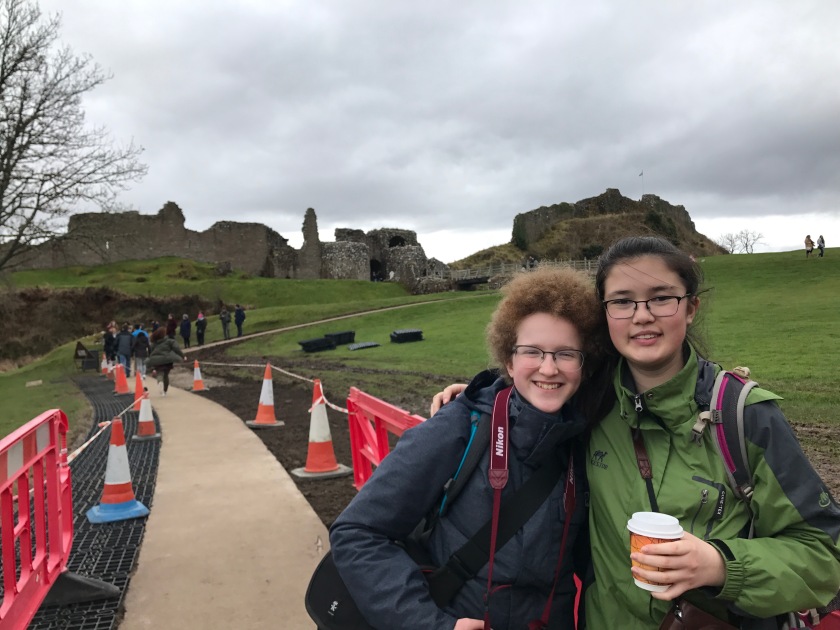
Our last day on the Emerald Isle was entirely uneventful as we boarded our bus immediately after breakfast, and Captain Lee set a northward course for our coach. We crossed into Northern Ireland—a new country and a new nation—without slowing down or having our passports checked. After about three hours of driving, we pulled into Belfast for a lunch of chicken burgers at a place that had the feel of B-Good Burgers joint. With time to kill before our ferry to Scotland sailed, we poked around the lobby and grounds of the Titanic museum (nobody chose to pay the twenty-five pounds to enter the museum proper) to learn a little about the place where the ill-fated ship was built and launched. A very short drive later we waved goodbye to our bus driver of the first several days and settled in for our 150 minute crossing of the Irish Sea. Once in Scotland, we boarded a new bus, piloted by the gregarious and talkative Dave, and drove for another five hours through the darkness to our home in the Highlands, the Balavil Hotel in Newtonmore. Day 4, really, was little more than a way to connect Ireland to Scotland for us.
Day 5, however, provided a chance to see and explore. After the best breakfast yet, featuring scrambled eggs, bacon, toast, home fries, tomatoes, and for a couple of braver souls, haggis, we headed through Scotland’s fabled Highlands bound for the Isle of Skye. The landscape of the Highlands is unlike anything anywhere in the world; primeval and mysterious, the mountains and lakes look like the unfinished work of the Celtic gods, and the constantly changing light as clouds thicken, disperse, then return gives the rugged terrain an enchanting case of multiple personality disorder. The highest peaks were frosted white while rivulets and torrents of snowmelt splashed toward the lochs below us.
By mid-morning we were crossing the 22-year-old but still-controversial Skye Bridge and heading toward the charming harbor town of Portree. Here we split into groups for some exploring, shopping, and lunch. Heading back toward Newtonmore, we struck a more leisurely pace, pausing many times to admire the views and snap photos. While most of our stops were to take in the creations of Mother Nature, we also checked out the very human-made Eilean Donan castle. A 13th century building left in ruins following a Jacobite rebellion in 1719, the fortress on an island in Loch Duich was restored in the early 1900s. One of the most recognized castles in all of Britain, it has appeared in uncountable postcards and many films, including ‘Highlander’ and ‘The World is Not Enough.’
Tomorrow: more Highlands adventure, including an on-the-water search for Nessie and a ride to the top of CarinGorm Mountain on Scotland’s only funicular railway. (check out this website for a video that will give you an idea of what the funicular railway is: http://www.cairngormmountain.org/funicular-railway/)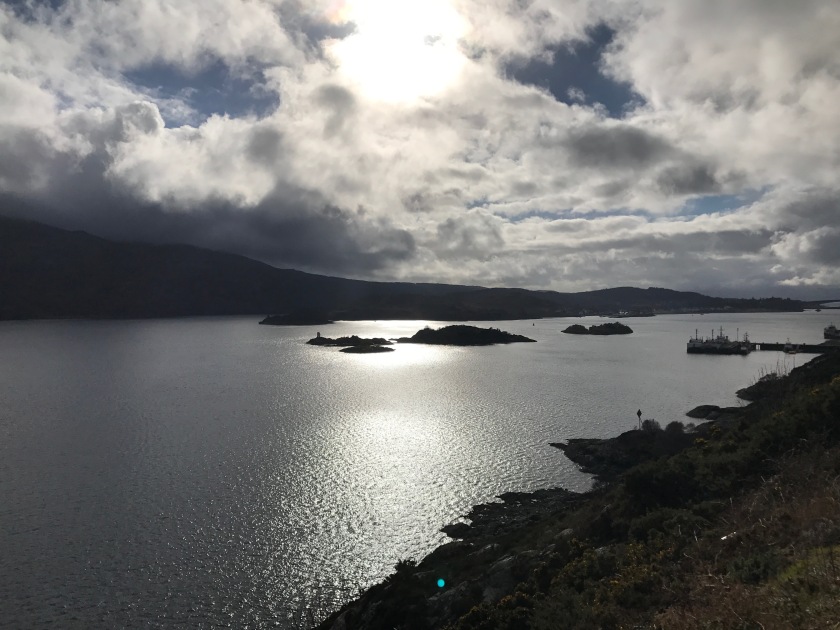
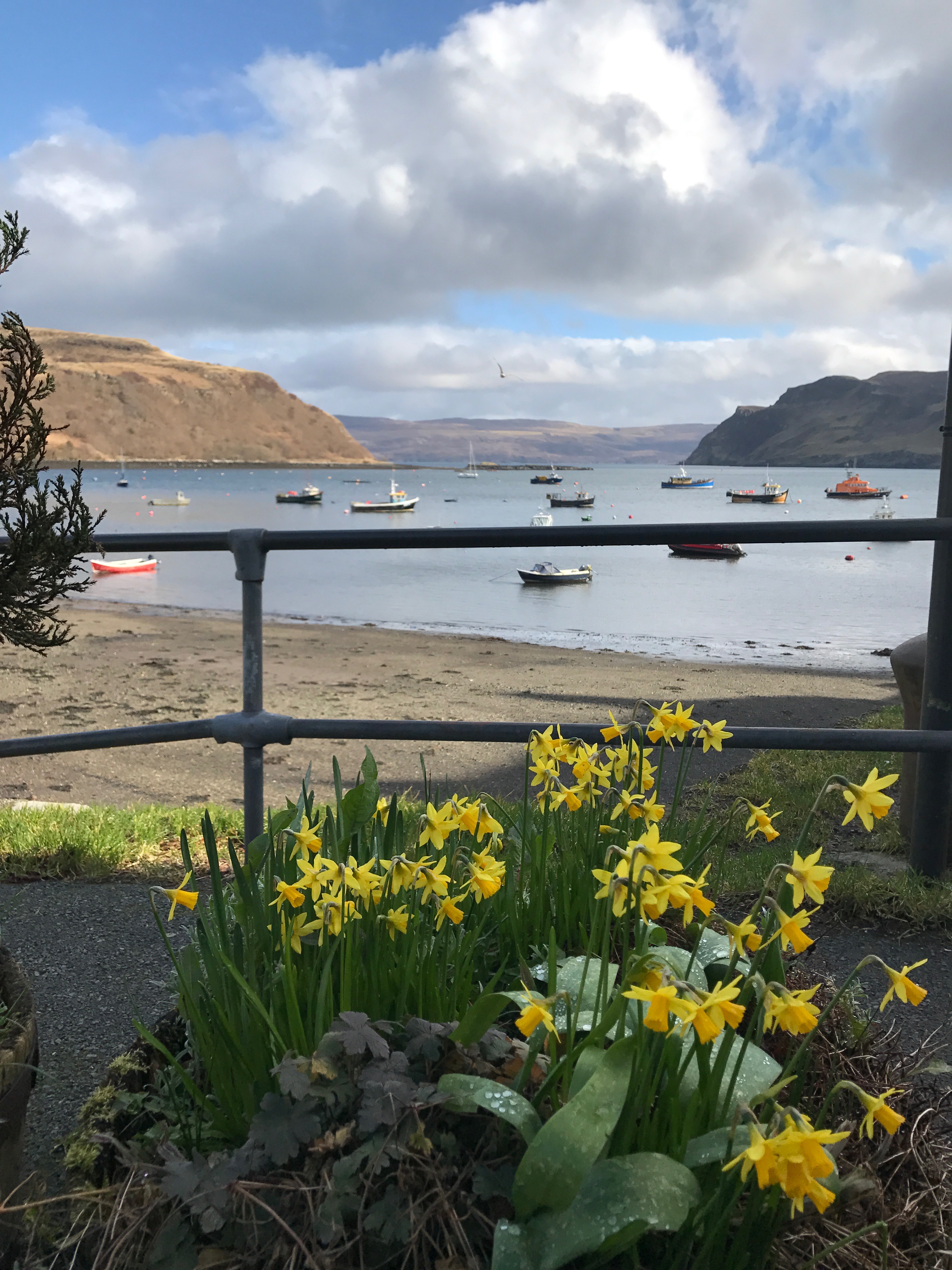


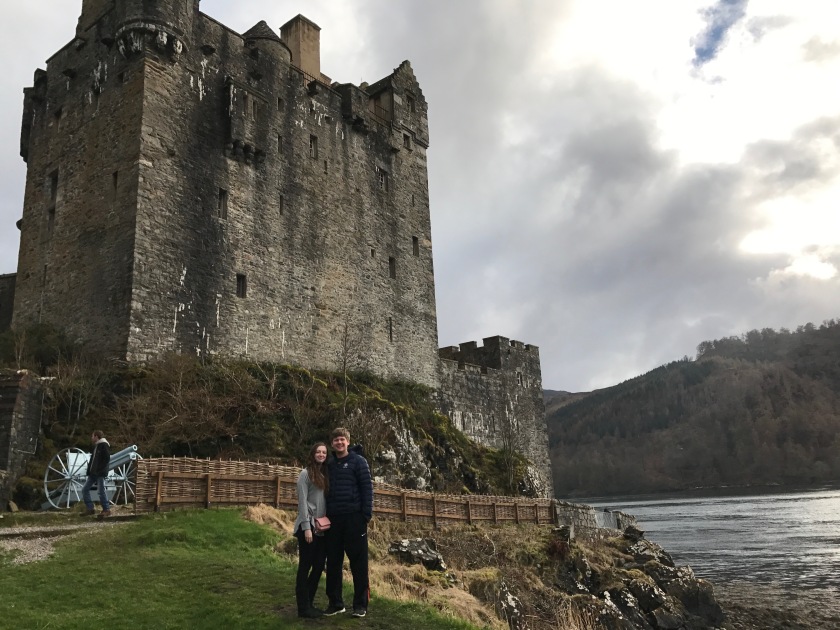
After two days of bustling city living, it was time to get out into the country a little bit. We boarded our bus at 9:00 this morning, and Captain Lee charted a course westward, about an hour up the M3 to Causey Farm in Fordstown. (http://www.causey.ie)
We started the day with a lesson in making traditional Irish brown bread, and our kids worked in teams to bake their very own loaves from scratch, later to be devoured as lunch. From the baking room we learned some traditional Irish dancing (not at all like
Riverdance!) and then moved into Girley Bog to learn a bit about the importance of peat to Irish peasant life. Among the trees of the bog, a few students tried a couple of low ropes type obstacles (rope bridge and tire—ahem! tyre—swings) to, mostly, smiles and success. One of our kids, who will remain unnamed but answers to something that sounds suspiciously like “Bosh Moresky,”found the tyres more difficult than expected, and his efforts just may go down in Causey Farm lore for years to come. Of course, what is a farm without animals? Our group had a chance to hold a day old lamb, and they played with puppies, sheep, and cows before heading back into Dublin for one more afternoon.
Some reflections on Dublin:
-It is a city trying to rediscover its architectural identity, and after years of centuries old buildings being bulldozed for 1960s, 70s, and 80s offices and apartment complexes, there is a renewed effort to save the oldest buildings, walls, and character of an ancient city.
-At the same time, it is in the midst of a dramatic building phase, and construction is found around every corner. Cranes soar high above rooftops as new buildings are put up, roads are torn up to make way for a brand new light rail system, and some of the oldest parts of the city are blanketed in scaffolding as rescue efforts are underway to protect and refurbish all that is worth keeping.
-Dubliners seem to love, love, love doughnuts! There are doughnut shops—quite fancy ones reminiscent of the cupcake craze in the U.S. a few years ago—all over the city, and all of them seem to be doing quite well. Our favorite: Boston Donuts in the Temple Bar area.
-Young (under 30) Dublin women love, love, love makeup! The more the better, it often seems, and much of it appears to be used to create the impression of a tan. Although we had a second day with lots of sunshine, the normal weather might make a natural tan difficult, so maybe the artificial bronzing is understandable.
-The people we’ve met have been wonderfully friendly and welcoming. Sure, just as you’ll find in any city anywhere, crowded sidewalks can create some tension, but the people we’ve talked to on the farm and in the city have offered help, advice, smiles, and warmth.
Tomorrow we head north in a day filled with travel to Scotland, so it is unlikely that we’ll be able to update the blog for about 48 hours.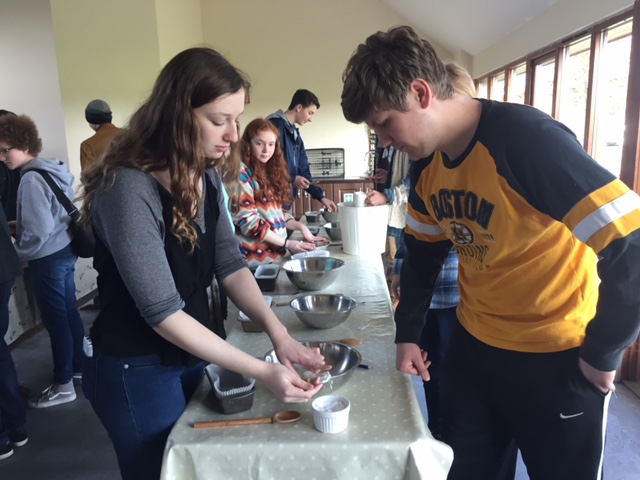
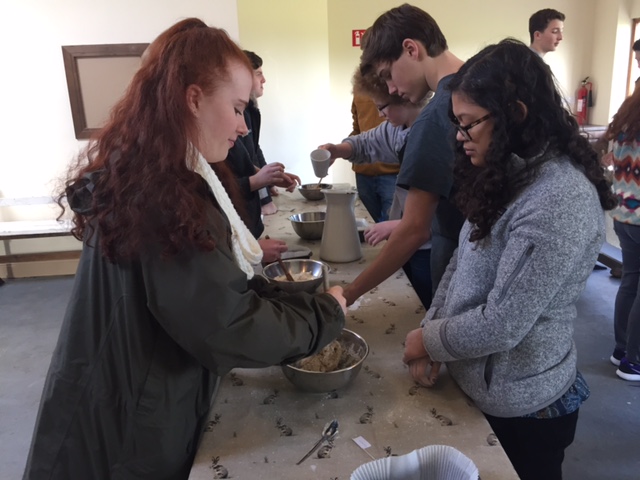
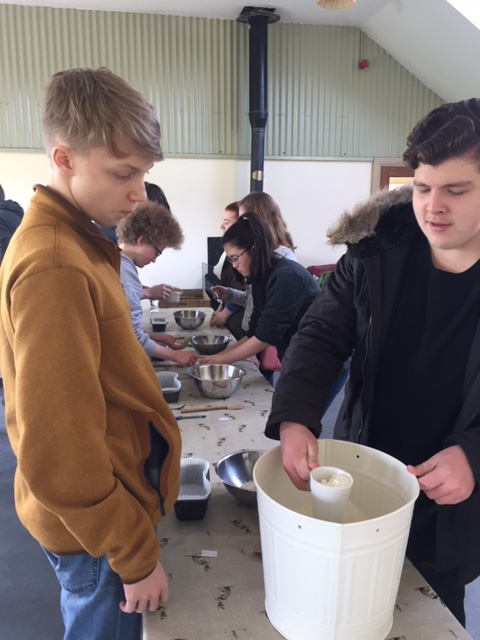


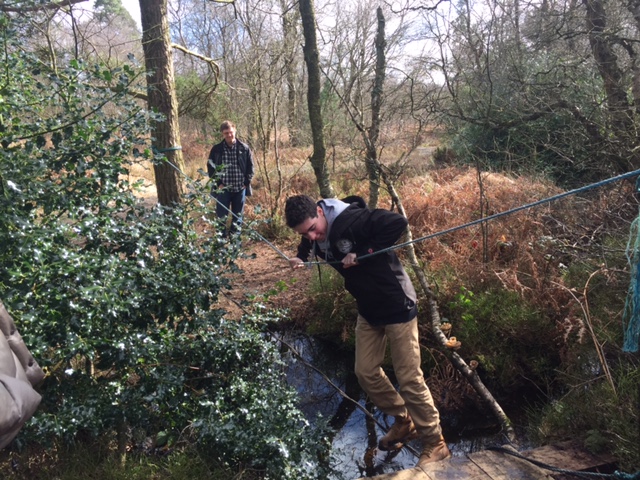

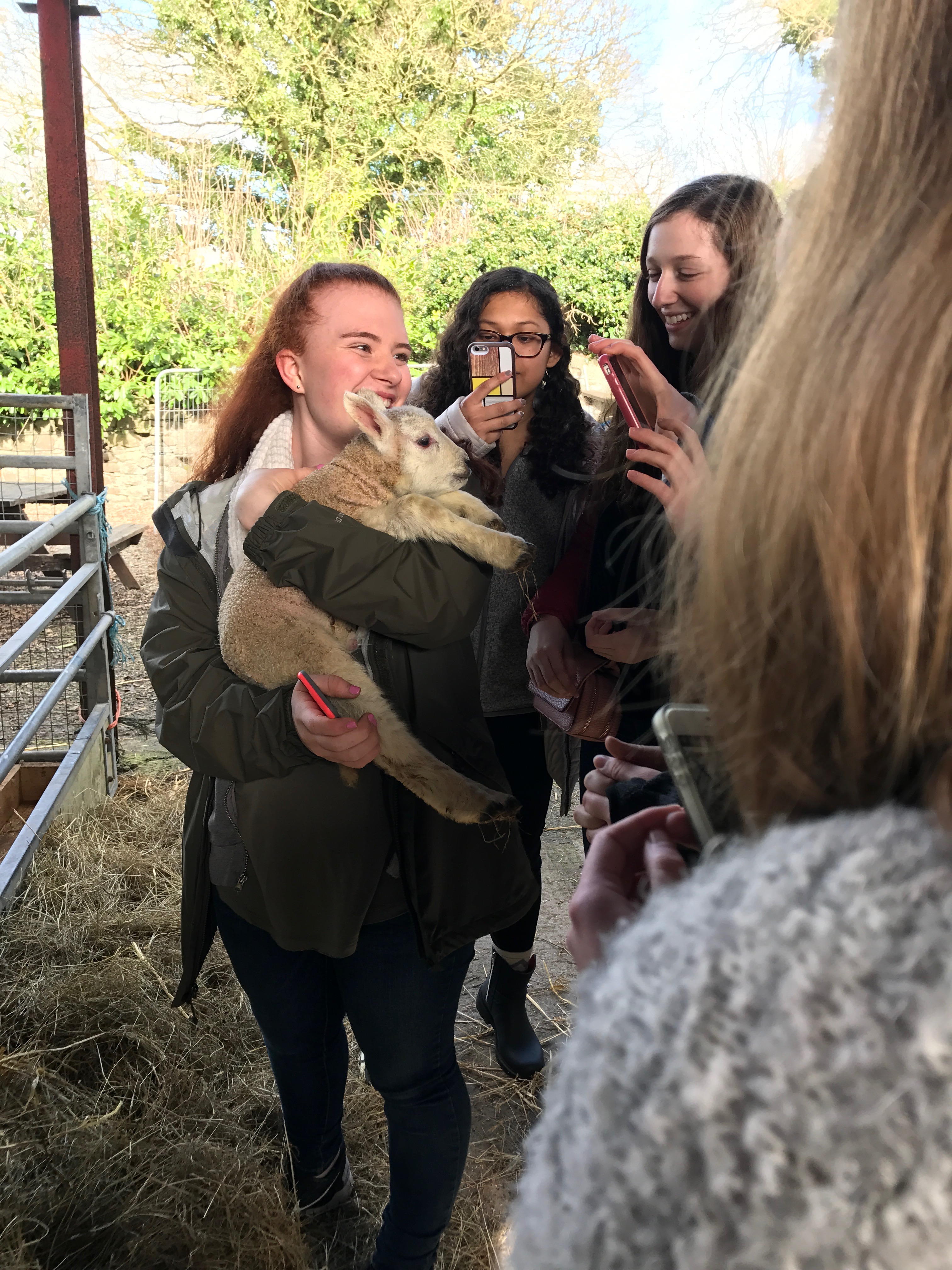
Once upon a time, the Vikings found a settlement on the shores of the Liffey River, and took it for themselves. Two days ago, a group of fifteen Brimmer & May students found the same settlement and, with significantly less carnage, began making it their own. Compact and easily walkable, Dublin can be thoroughly explored with hours of strolling, and hours we had.
On the first day, that strolling might have looked more like zombie shuffling, as a nearly sleepless flight landed us on the Emerald Isle at 5:00 a.m. local time, and a few hours later we were walking the streets of Ireland’s capital city. Very quickly several of our students found the ubiquitous Carroll’s Irish Giftshop—they are as common in Dublin as Dunkins is in Boston—and began souvenir shopping. Gabe, Josh, and the fellas were particularly taken with a mini rugby ball that they began flipping back and forth to each other as they navigated the sidewalks. The main cultural event of the day came in our visit to Trinity College and a look at the Book of Kells and the stunning reading room of the library. We ended the day with a bowl of Irish stew and crashed at our hotel south of the city.
The second day, Wednesday, was, in many respects, our first “real” day of the tour, as we were rested and well-fed. We started by picking up our tour guide who drove us through the Georgian District, the Viking District with walls dating back to the 900s, and stops at St. Patrick Cathedral and the site where Pope John Paul II gave a sermon to over a million Irish (the entire country has a population of only three million) in 1979. During afternoon free time, some were excited to take part in the International Women’s Day rallies taking place around the city, while others did more shopping and explored corners left unseen after the first day.
On the Thursday itinerary: a trip to a farm west of Dublin before one more evening in the capital, then on to Belfast and the ferry to Scotland! There is talk of a possible sight-seeing of the site the Titanic sailed from in 1912 during our brief foray in Northern Ireland. Stay tuned! And photos are on the way soon!

